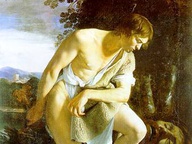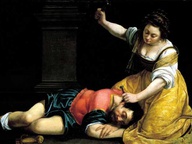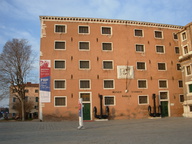Stemperando I The International Biennial of Works on Paper
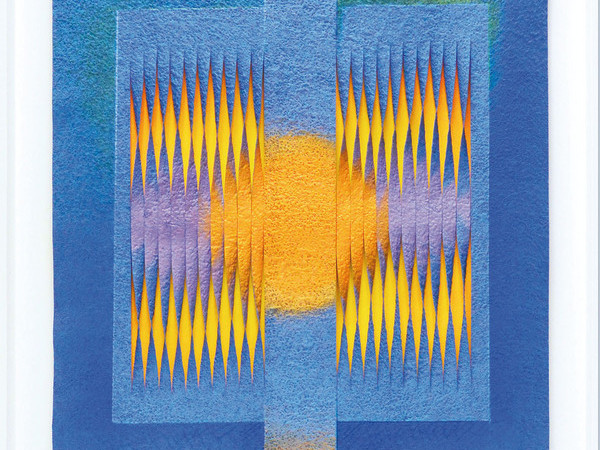
Stemperando I Biennale Internazionale di Opere su Carta, Biblioteca Nazionale Universitaria di Torino
From 05 Febbraio 2015 to 08 Marzo 2015
Turin
Place: Biblioteca Nazionale Universitaria di Torino
Address: piazza Carlo Alberto 3
Times: Monday to Friday 10am-06pm; Saturday 10am-01pm
Responsibles: Anselmo Villata, Alfred Milot Mirashi
Organizers:
- Istituto Nazionale d’Arte Contemporanea
Ticket price: free entrance
Telefono per informazioni: +39 011 8101111
E-Mail info: info@stemperando.it
Official site: http://www.stemperando.it
Given the flowing technological offer, subject to an immediate anachronism on account of the continuous innovating evolution, paper, a word gathering the immensity of a fascinating world, remains the excellent material in the history of mankind and of its creativity despite a market which has been able to perpetuate over time the idea of its superiority in comparison with other materials which are considered as nobler in the artistic use. However, videos, monitors and displays have stormed into the world of art and since some decades now they have boringly been all the rage in the global levelling out of pseudo-novelty (actually false) aiming at disguising the stagnant lack of ideas and genius in at generating ephemeral myths. On the other hand, technology must be recognized as an irreplaceable instrument, a useful means and an aid for specific works, while in the artistic field it hides tricky conditionings which bind the individual intelligence to the limits and capabilities of others, i.e. of those who have conceived hardware and software. It can be conceived as a sort of team work within which the final author, the one who makes use of someone else’s ideas, in reality is the real creator, although he represents, with a generous concept, those who are able to put the work of a non-artistic team to good use. So this too is a service supplied by giving up most of their expressive freedom, forcedly contained within the limits of the previously given technical and information skills, although unintentionally.
It seems that this is not the natural bent of man, who since his origin has looked for the most suitable way to show his own essence, leaving indelible signs and witnesses of his creative moment, which caused strong emotions handed down to many others and to the future.
Individuality, personality and conceptual freedom are more genuine and spontaneous when bound by characterizing operational vehicles and paper, of any kind it may be, becomes in the artist’s hands a primary element, fully corresponding to such needs since the planning stage. Paper production, as for it, offers a wide and varied range of sheets with endless combinations of formats, colours, consistency, calendering and workmanship, all the more so that already on the basis of the choice and determination of the right price the idea, the embryo of the work start taking shape. Of course, this is true in every aspect of man’s expressive sphere, from writing to literature, poetry, music composition u to architectural plans; however the initial value of the material is even more felt in the field of figurative arts, above all painting and sculpture.
The artist’s physical contact with the material becomes itself a moment of creative passion and he considers this relationship as an essential experience, a more refined way to perceive ones’ thoughts and transmit them with the constructive complicity of a body which is not inert, but natural and living, already defined by passages and metamorphoses. Ideal place where to determine a symbiosis with one’s own being and give free play to one’s invention, one’s personal vocabulary, give life to new worlds, let one’s own story flow, which corresponds to the narration of man’s history through a iconology revealing cultures and individualities capable of creating the right balance between reason and emotionality, since it sets aside both extremes and balance itself on the tongue of spontaneousness. Much depends upon the pigments uses, but generally paper does not allow second thoughts as regards the tracing out, hues, shades, cuts and so the resulting work is true and sincere and presents his own creator a new component of the private feeling and expression. Besides, the encounter with small hitches turns the means into an active element which takes part and contributes to the realization of an image, when changing porosities or imperfections of the surface intervene on details of the initial idea. For the artist these are not obstacles but spurs; it is like discovering gradually an unexplored world which at first sight had hidden details amongst the cellulose fibres, which turn out to be important side by side with signs and colours. The emotional situations determined by the contact and the use of paper nourish authors’ attitudes of challenge with themselves, with their own technical and invention skills, of self-analysis on personal growths, a continuous control, a sort of checking occurring on a space open to projects, ideas and surprises. The basic thing in all this is the particular character of paper, versatile, ductile, malleable, plastic, which, on the contrary, other materials do not have and make it alive, reactive under the impulses it receives; it let itself be manipulated submitting docilely even to physical deformations, facilitated by the humidity of the pigments which soaks the fibres and it swells up, twists, moulds itself in an imperceptible molecular earthquake which becomes explicit through an overall view of the transformation of the object. In this spirit the language is universal and the cultural differences determine modes and aesthetic purposes according to concepts, thoughts and iconographies which in the historical, social, individual and temporal variability find the essential nourishment to the media outburst.
The idea of beauty is each time singular, in so far as it is able to keep the naive spark of its creator, culturally contaminated though capable of saving and making emerge the intimism and the values he keeps inside.
All artists, in every part of the planet, put themselves to the test by experimenting the use of paper, while being aware and not necessarily reflecting on the properties of the material, in any case taking part in the construction of the artistic history over time and a witness of his time. In order to achieve a correct knowledge and a complete view of the evolution and of the state of art it is necessary to consider carefully the works on and with paper, because they constitute their real being, above all designation, definition, inclination or declination.
“Stemperando”, borne from these certainties and in this spirit, has the ambition and the objective to show every two years the contemporary artistic situation through the exemplification present in a group of artists who change in the different editions and proceeding from the different geographic and cultural areas and of different ages and with different backgrounds. This is an exhibition which in its recurrence can be elected a historical monument – for those who can read – and opposes the attempts of limitations, levelling, generalizations and where each artist is unique as such, with all hi/her values, an individual who with his/her personal contribution to society, actually recovers the role he deserves as promoter and supporter of culture and aesthetics. This is the meeting point of all the expressions researches of real art which a certain contemporaneity has mortified in name of a presumed modernity, sometimes ephemeral and some others superficial, suffering from the mania of always trying to put oneself in the limelight to be achieved by any means.
It seems that this is not the natural bent of man, who since his origin has looked for the most suitable way to show his own essence, leaving indelible signs and witnesses of his creative moment, which caused strong emotions handed down to many others and to the future.
Individuality, personality and conceptual freedom are more genuine and spontaneous when bound by characterizing operational vehicles and paper, of any kind it may be, becomes in the artist’s hands a primary element, fully corresponding to such needs since the planning stage. Paper production, as for it, offers a wide and varied range of sheets with endless combinations of formats, colours, consistency, calendering and workmanship, all the more so that already on the basis of the choice and determination of the right price the idea, the embryo of the work start taking shape. Of course, this is true in every aspect of man’s expressive sphere, from writing to literature, poetry, music composition u to architectural plans; however the initial value of the material is even more felt in the field of figurative arts, above all painting and sculpture.
The artist’s physical contact with the material becomes itself a moment of creative passion and he considers this relationship as an essential experience, a more refined way to perceive ones’ thoughts and transmit them with the constructive complicity of a body which is not inert, but natural and living, already defined by passages and metamorphoses. Ideal place where to determine a symbiosis with one’s own being and give free play to one’s invention, one’s personal vocabulary, give life to new worlds, let one’s own story flow, which corresponds to the narration of man’s history through a iconology revealing cultures and individualities capable of creating the right balance between reason and emotionality, since it sets aside both extremes and balance itself on the tongue of spontaneousness. Much depends upon the pigments uses, but generally paper does not allow second thoughts as regards the tracing out, hues, shades, cuts and so the resulting work is true and sincere and presents his own creator a new component of the private feeling and expression. Besides, the encounter with small hitches turns the means into an active element which takes part and contributes to the realization of an image, when changing porosities or imperfections of the surface intervene on details of the initial idea. For the artist these are not obstacles but spurs; it is like discovering gradually an unexplored world which at first sight had hidden details amongst the cellulose fibres, which turn out to be important side by side with signs and colours. The emotional situations determined by the contact and the use of paper nourish authors’ attitudes of challenge with themselves, with their own technical and invention skills, of self-analysis on personal growths, a continuous control, a sort of checking occurring on a space open to projects, ideas and surprises. The basic thing in all this is the particular character of paper, versatile, ductile, malleable, plastic, which, on the contrary, other materials do not have and make it alive, reactive under the impulses it receives; it let itself be manipulated submitting docilely even to physical deformations, facilitated by the humidity of the pigments which soaks the fibres and it swells up, twists, moulds itself in an imperceptible molecular earthquake which becomes explicit through an overall view of the transformation of the object. In this spirit the language is universal and the cultural differences determine modes and aesthetic purposes according to concepts, thoughts and iconographies which in the historical, social, individual and temporal variability find the essential nourishment to the media outburst.
The idea of beauty is each time singular, in so far as it is able to keep the naive spark of its creator, culturally contaminated though capable of saving and making emerge the intimism and the values he keeps inside.
All artists, in every part of the planet, put themselves to the test by experimenting the use of paper, while being aware and not necessarily reflecting on the properties of the material, in any case taking part in the construction of the artistic history over time and a witness of his time. In order to achieve a correct knowledge and a complete view of the evolution and of the state of art it is necessary to consider carefully the works on and with paper, because they constitute their real being, above all designation, definition, inclination or declination.
“Stemperando”, borne from these certainties and in this spirit, has the ambition and the objective to show every two years the contemporary artistic situation through the exemplification present in a group of artists who change in the different editions and proceeding from the different geographic and cultural areas and of different ages and with different backgrounds. This is an exhibition which in its recurrence can be elected a historical monument – for those who can read – and opposes the attempts of limitations, levelling, generalizations and where each artist is unique as such, with all hi/her values, an individual who with his/her personal contribution to society, actually recovers the role he deserves as promoter and supporter of culture and aesthetics. This is the meeting point of all the expressions researches of real art which a certain contemporaneity has mortified in name of a presumed modernity, sometimes ephemeral and some others superficial, suffering from the mania of always trying to put oneself in the limelight to be achieved by any means.
SCARICA IL COMUNICATO IN PDF
alberto biasi ·
claudio sacchi ·
xavier medina campeny ·
susan leyland ·
paolo conti ·
carlo mazzetti ·
alberto brusa ·
gao yang ·
graham guerra ·
kivan g lhan ·
ali herischi ·
jiang shanqing ·
paolo marazzi ·
sophia michaeledes ·
azad nanakeli ·
qiu yi ·
ran xue mei ·
lberto biasi ·
michele stanzione and oth ·
lberto biasi alberto brusa paolo conti gao yang graham guerra kivan g lhan ali herischi jian
COMMENTI

-
 Dal 20 dicembre 2024 al 04 maggio 2025
Fermo | Palazzo dei Priori
Dal 20 dicembre 2024 al 04 maggio 2025
Fermo | Palazzo dei Priori
-
 Dal 20 dicembre 2024 al 04 maggio 2024
Gorizia | Palazzo Attems Petzenstein
Dal 20 dicembre 2024 al 04 maggio 2024
Gorizia | Palazzo Attems Petzenstein
-
 Dal 18 dicembre 2024 al 18 dicembre 2024
Venezia | Museo Correr
Dal 18 dicembre 2024 al 18 dicembre 2024
Venezia | Museo Correr
-
 Dal 14 dicembre 2024 al 02 marzo 2025
Palermo | Palazzo Abatellis
Dal 14 dicembre 2024 al 02 marzo 2025
Palermo | Palazzo Abatellis
-
 Dal 12 dicembre 2024 al 23 febbraio 2025
Roma | Palazzo Altemps
Dal 12 dicembre 2024 al 23 febbraio 2025
Roma | Palazzo Altemps
-
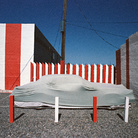 Dal 13 dicembre 2024 al 31 agosto 2025
Roma | Museo dell'Ara Pacis
Dal 13 dicembre 2024 al 31 agosto 2025
Roma | Museo dell'Ara Pacis
